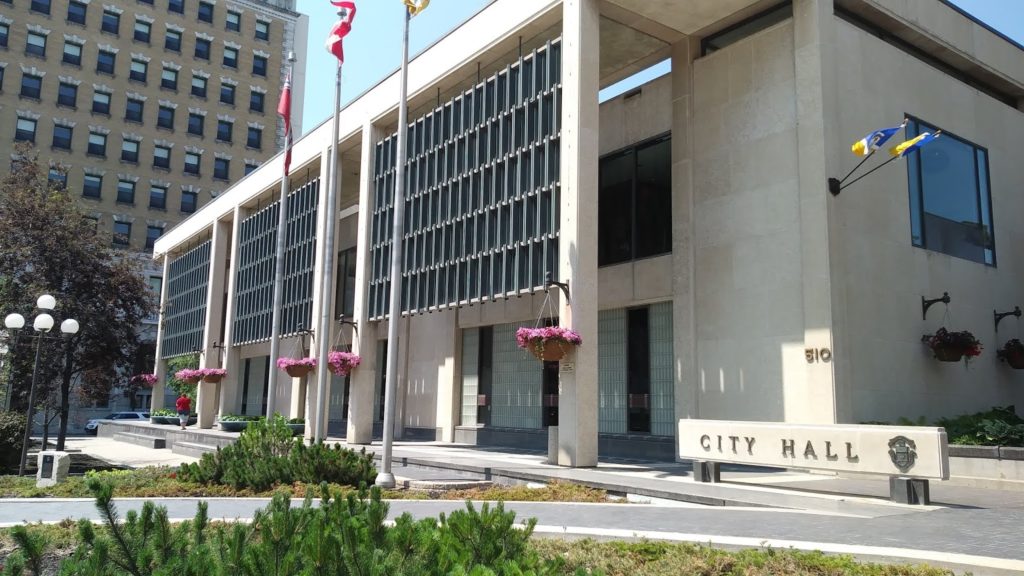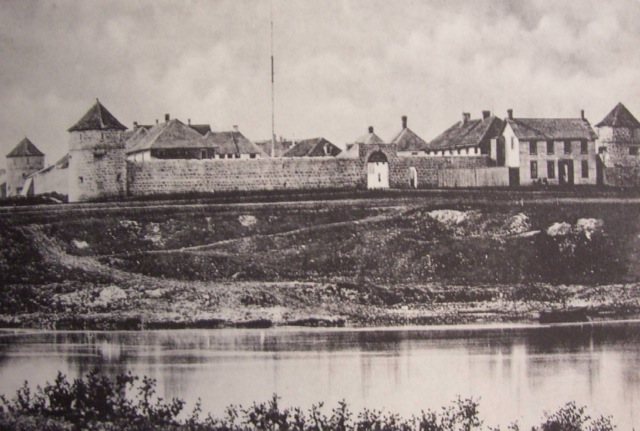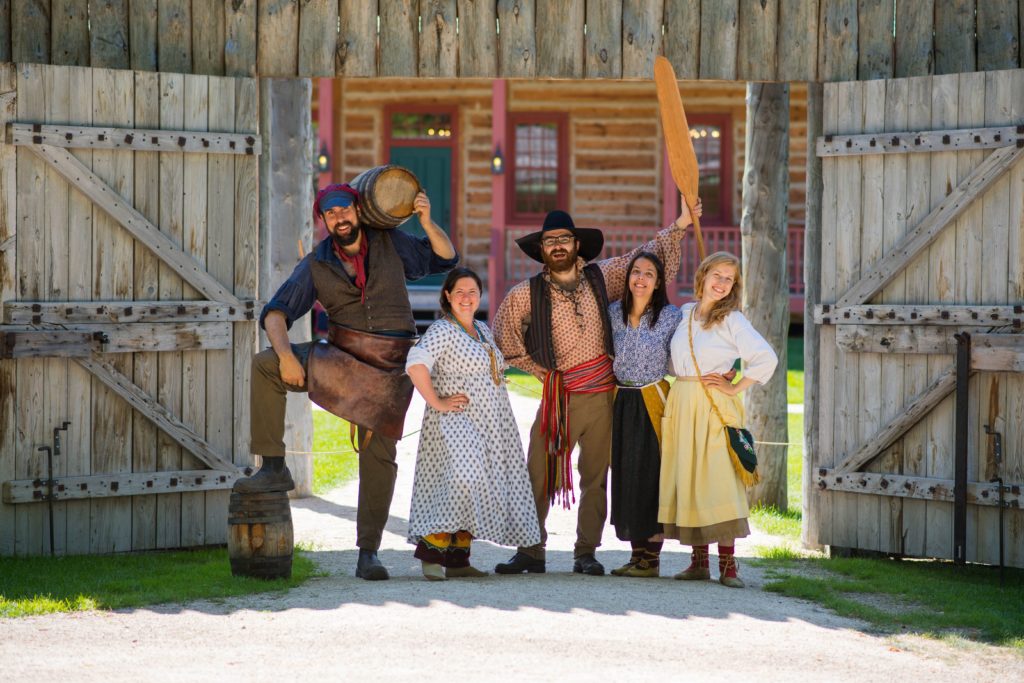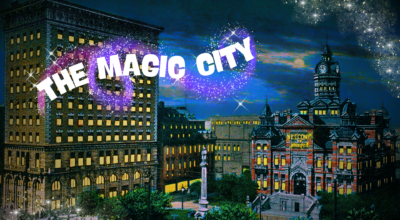
/ Blog
February 10, 2021
Hé-Ho To Fort Gibraltar We Go!
Winnipeg is a city founded on forts. All along the rivers different interests staked their claim by erecting a structure, some more imposing than others, to carry out business and secure their goods. For over 280 years these forts have come and gone, built of large stone and heavy timber, they have burned down and washed away, been torn down or left to decay. Few remnants of these early forts remain, preserved as artifacts that speak to our fur trading past. But one of these forts, Fort Gibraltar, has defied the odds, rising up again to become a vibrant part of its modern community. The fortified structure that once kept people out, now welcomes them in, into a stronghold of culture and tradition, where Winnipeg’s past is remembered and celebrated.
Fort Gibraltar goes back to the early 19th century, when it was built by the North West Company (NWC). The exact year it was built varies between 1803-1809. It was built where the Assiniboine River and the Red River meet. Today, this location is known as the Forks. The Fort was surrounded by oak pickets that were 12 to 15 feet in length. Eight buildings were within the Fort, including a tower used for observation.
The history of Fort Gibraltar is murky at best. In 1816 the Fort was seized by settlers and possibly set ablaze. It was rebuilt shortly after and some sources state that pieces of the original fort were used to build Fort Douglas. 1821 saw the merger of the NWC and the Hudson’s Bay Company(HBC) and the following year the Fort was renamed Fort Garry. Fort Gibraltar for all intents and purposes ceased to exist in approximately 1835, when the HBC rebuilt what is now known as Upper Fort Garry. This pushed Fort Gibraltar into a dark and lonely corner of the historical record.
The NWC was the rival of the HBC. Both were primarily fur trading companies, although the NWC created posts that were more rural, which gave them an advantage when it came to collecting furs from Indigenous groups. This lead to tension between the two fur trading companies. In 1821, the British government forced the NWC to merge into the HBC due to escalating tensions and economics.
The construction of multiple forts by Europeans created the foundations for what is modern day Winnipeg, however this was at the expense of the Indigenous populations of the area. Today, this land is known as Treaty One territory, lands of Anishinaabeg, Cree, Oji-Cree, Dakota, and Dene peoples, and on the homeland of the Métis Nation. These are part of the Numbered Treaties which the Canadian Government used to gain control of land that they saw as valuable, all the while marginalizing the Indigenous populations. There is evidence that points to the Canadian Government not being honest and transparent when the treaties were being created. Verbal promises were made but never fulfilled, translation and language barriers lead to misunderstandings, and cultural understandings about land ownership were different. These are only some of the issues surrounding the Numbered Treaties. Many Indigenous leaders signed the Numbered Treaties as sadly, most saw no other viable option. If the Canadian Government wanted the land, they were going to get it one way or another.
It took just under 150 years for Fort Gibraltar to physically exist again. It was rebuilt in St. Boniface across the river from where Fort Douglas once stood. It may come as a surprise to some but the current Fort Gibraltar is actually a modern creation. It looks old and historical but in fact it is younger than Winnipeg’s modern City Hall! But this leads to the question, what is historical? Is it literally by date, or is it bringing back ideas of the past?

Source: Naomi Brien for Heritage Winnipeg
The idea of recreating a fur trading fort took place in the late 1970s in which the Fort Gibraltar Foundation asked the city for money to build a replicate Fort in Whittier Park. The estimated cost for the Fort was $500,000. It took a while for everything to come into place, but starting in 1978 construction on the Fort began. The construction took many years and it did not help that in 1987 vandals torched a tower, which meant it had to be repaired.
The Fort was built with the historical record in mind, using archival records to re-create a fort in the 20th century. Each side of the Fort is 192 feet long, making a square enclosure. It is superbly well done, it even smells old! Yet once you know that it is modern construction, little things here and there can be spotted. But that does not ruin the fun, if anything it makes it easier to keep the history alive. And by being a modern structure, there are no heritage restrictions unlike places such as Lower Fort Garry.
The one part of today’s Fort Gibraltar is that is without a doubt, modern is the interior of the La Maison du Bourgeois (the bourgeois house), which was built in 2001, costing just over $1 million. It is a bit of a shock when stepping inside, as you are suddenly transported from the past into the present. This is totally intentional, as this building is used to host a wide array of events. Having a modern interior allows for ease of use and also accessibility. Sometimes a “lack of historic nature” can be a good thing.
Today Fort Gibraltar is best known for hosting Festival du Voyageur every February. It is the largest winter festival in Western Canada! Festival du Voyageur brings Voyageur, Métis and First Nations histories back to life. The Festival is a wonderful time regardless of how cold it might be outside. It is one of the few times of the year that one can enjoy maple syrup on the stick, fulfilling that Canadian stereotype, that we are all obsessed with the sweet stuff. 2021 is the 52nd Festival du Voyageur and although this one may look a little different due to a global pandemic, it will still be every bit as wonderful as it has been in the past. The Fort is also a long time participant of Doors Open Winnipeg, welcoming locals and tourists alike to learn about its rich history on the last weekend of May.
In an imperfect world where structures are torn down everyday to make way for progress, the modern Fort Gibraltar is a excellent solution for bringing the past back to life! The community’s desire to reconstruct the Fort speaks to just how important history is to a community, and a reminder that we should take good care of the built heritage that is still standing today. The Fort illuminates the past, letting us learn from our mistakes and acknowledge our accomplishments, all while providing space for new memories to be made. No longer a hub of the fur trade, it is now a community hub that manages to safely hold the past and the present all within the safety of its tall wooden walls.
THANK YOU TO THE SPONSOR OF THIS BLOG POST:

Written by Rheanna Costen on behalf of Heritage Winnipeg.
SOURCES:
"Festival du Voyageur to Run Shuttle from The Forks" | ChrisD - January 14, 2014.
"Fort Gibraltar Open for the Summer" | ChrisD - May 25, 2011.
"Fort Gibraltar Summer Tours" | ShawTV Winnipeg Youtube - May 20, 2016.
"Forts Rouge, Garry and Gibraltar National Historic Site of Canada" | Parks Canada
"Grievances Aired At Meeting" | Winnipeg Free Press - June 5, 1980, Page 6.
"Group Likely to Get Approval for Historic in Whittier" | Winnipeg Free Press - September 23, 1978, Page 7.
"Historical Dates for Winnipeg" | Winnipeg Free Press - May 7, 1974, Page 82
"The Illustrated History of Winnipeg" | Winnipeg Free Press - January 7, 1905, Page 15.
"Maison du Bourgeois - Fort Gibraltar" | Bockstael Construction
"The North West Company" | Hudson's Bay Company History Foundation
"The Old Forts of Winnipeg, 1738-1927" | Manitoba Historical Society
"The PLEA: Treaties and the Law" | Teachers and Schools by PLEA
"Timeline of Winnipeg Historical Events 1670-2012" | City of Winnipeg
"Tower Topper" | Winnipeg Free Press - May 28, 1988, Page 3.
"Up With the Old" | Winnipeg Free Press - January 12, 1984, Page 2













